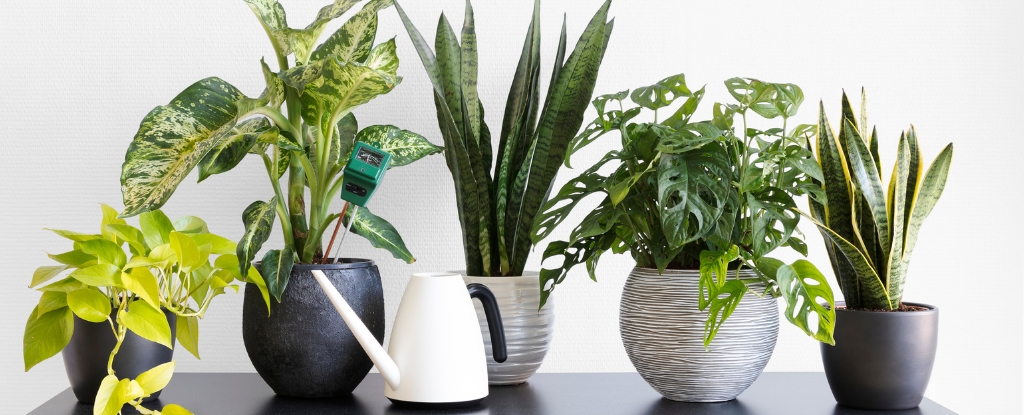Exploring Copenhagen During Dark Season: World-Class Food, Saunas, and Culture
Might be time to reevaluate Copenhagen's "off season."
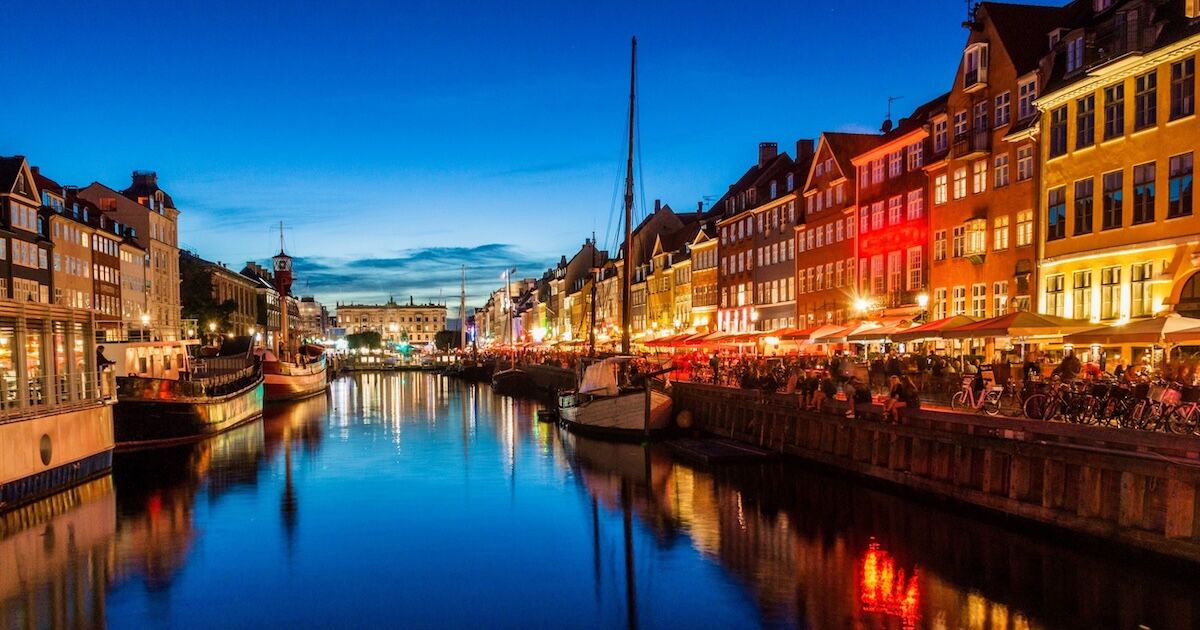
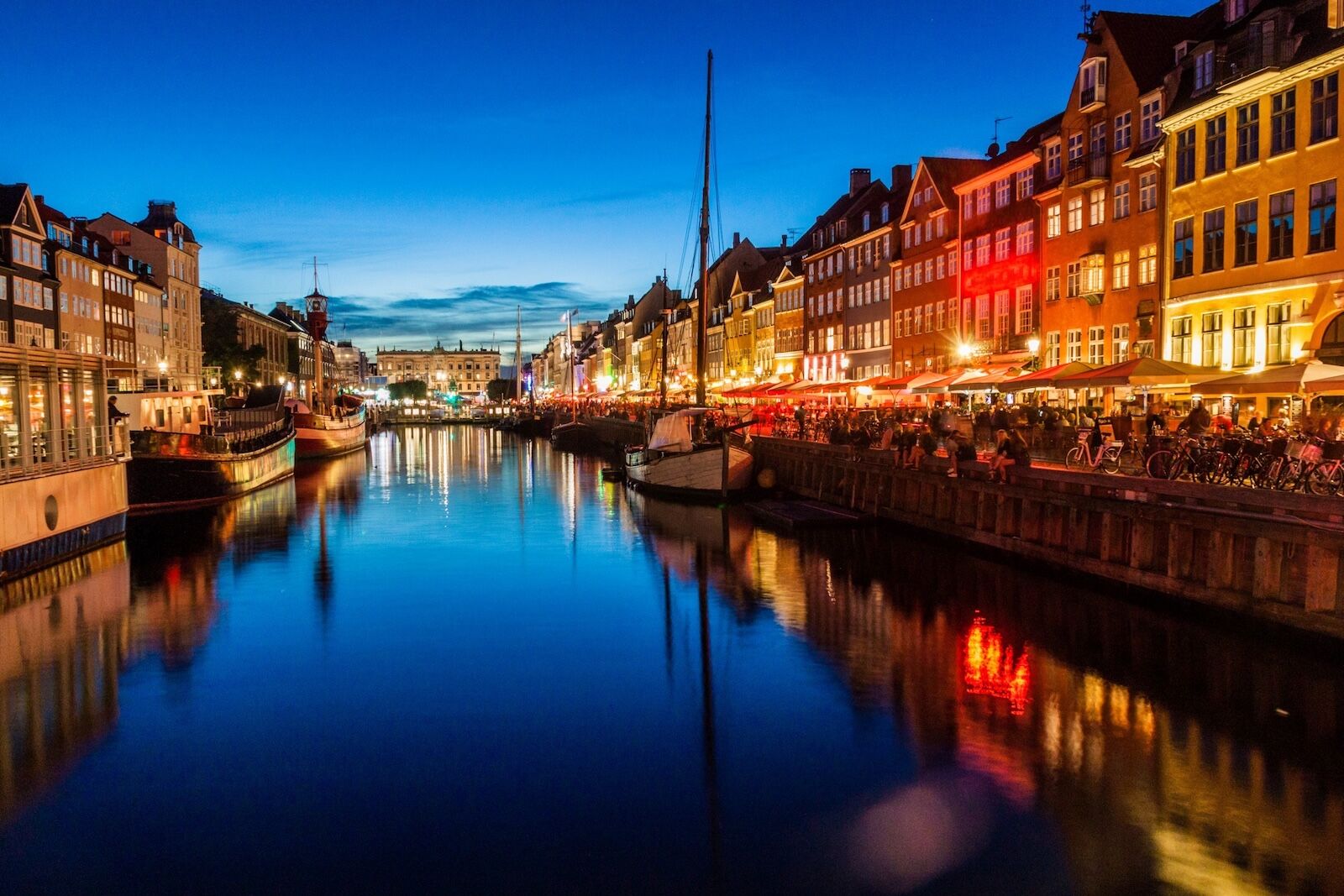
“You chose February to come to Denmark for the first time?” Andrea, my bartender at T37 — a sleek New Nordic cocktail bar in Copenhagen — asked, her eyes wide with disbelief. She was an expat from Spain with an instinctive aversion to Scandinavia’s virile winters. Didn’t I know, she pressed as she poured another glass of Gammel Dansk, how heavenly Copenhagen was in the summer? She painted a vivid picture of outdoor concerts, buzzing waterfronts, and a collective euphoria sparked by endless daylight and perfect weather. My reasoning must have sounded absurd, but it was sincere: I chose to come during the coldest, darkest stretch of the year out of literary reverence.
As an awkward but ardent teenager, I found a kindred spirit in Hamlet — Shakespeare’s introspective and hopelessly romantic Danish prince. Later, in an introductory philosophy course, I encountered Søren Kierkegaard, and his haunting meditation on faith and heroism, Fear and Trembling, profoundly reshaped the way I saw the world. At the bar, I promised Andrea I’d return one day to revel in Copenhagen’s vernal joys. For my first visit, I wanted cold sea winds and long, dark nights; incandescent sunsets and mornings cloaked in mist. In other words, the brooding climate evocative of my Danish literary heroes.
Winter, I discovered, brings a host of quirky delights to Copenhagen. With fewer tourists and more locals about, the city feels more intimately Danish this time of year. It’s the season of hygge, that famously untranslatable word conjuring the cozy bliss of sharing drinks in a snug pub while snow dusts the streets outside. Copenhagen’s world-class culinary scene dazzles year-round, but winter brings its own special treats: richer fishes and oysters, dark malty beers, and fastelavnsboller (cream-filled, cardamom-scented pastries traditionally enjoyed before Lent).
Winter in Copenhagen is a time to bundle up, slip a pocket-sized copy of Kierkegaard into your coat, and savor the raw, brooding charm of the colder months.
Where to eat
Copenhagen, glittering with Michelin stars, is a vaunted gastronomic capital on par with Tokyo, Paris, or New York City. Noma, crowned the world’s best restaurant five times, helped make Copenhagen the leader of the New Nordic food movement that emphasizes foraged ingredients; minimalism; and seasonal, hyper-local produce. New Nordic restaurants tend to steal the spotlight, but the city’s Italian and Japanese restaurants are equally impressive and rival the best in Manhattan. Traditional Danish cuisine — crispy fried pork belly, smørrebrød, and plenty of seafood — offers its own quiet allure. I recommend splurging on at least one meal at a New Nordic restaurant, then rounding out your culinary tour with a medley of Italian, Japanese, and traditional Danish meals.
Caronte
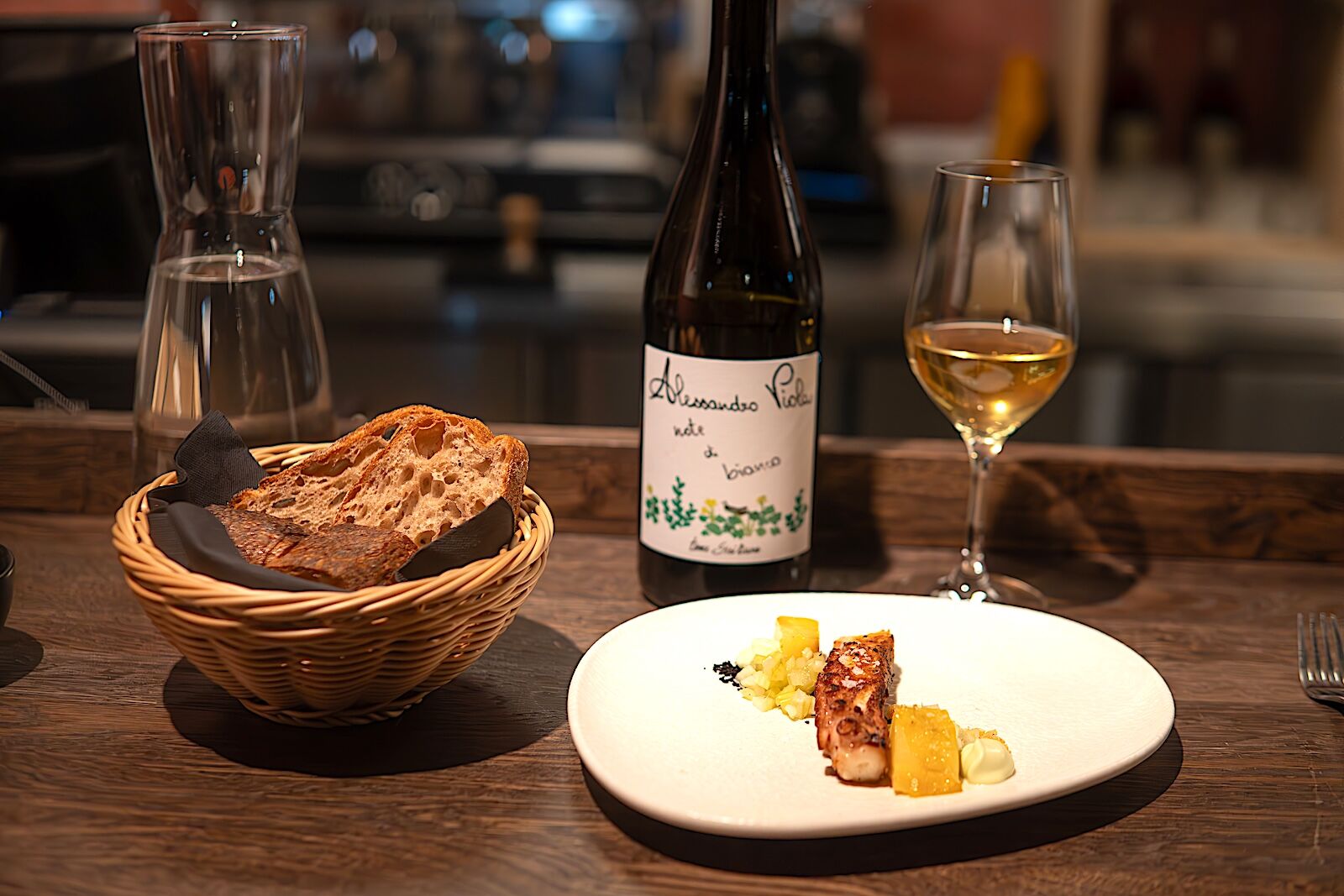
Photo: Johnny Motley
As a mythology nerd, I couldn’t resist stopping into Caronte — a restaurant named after Charon, the ferryman of souls in Greek and Roman lore. I intended to stay for just a drink, but the bartender and general manager, Dario, was such good company that I lingered late into the night, sampling nearly the entire menu. I’ve spent a fair amount of time in Italy, and I’ll gladly attest that Caronte’s pastas, risottos, and charcuterie hold their own against anything I’ve tasted in bella Italia. Founded by two sommeliers, the wine list is delightfully offbeat, showcasing Italian grapes like grillo, fiano, and pignolo that can be hard to find outside of Italy. Whatever else you order, don’t skip the pumpkin. I don’t typically like squash, but Caronte’s balsamic-glazed pumpkin is so delectable I’d request it as my death row meal.
Caronte: Fadet 31, 1799 København V, Denmark
Kappo Ando
Japanese and Scandinavian cuisines have always struck me as kindred spirits with a shared reverence for seafood, pared-down recipes, and a commitment to minimizing waste. Kappo Ando, helmed by Japanese chef Akiko Ando Levinsen and her Danish husband, chef Henrik Andō Levinsen, serves spectacular sashimi and maki using fish sourced locally from the North Sea. The sake list is encyclopedic. But the star here is yakitori: skewered meat delicately charred on a blazing hot grill fired with Japanese charcoal. For condiments, just a touch of salt or a kiss of house-made yuzu kosho (a citrusy chili paste).
Kappo Ando: Øster Farimagsgade 93, 2100 København, Denmark
Restaurant Levi

Photo: Levi
At Restaurant Levi, chef Gabriele Rizzo masterfully blends Japanese and Italian cuisine with hints of New Nordic flourish. Rizzo is an alum of Geranium, one of Copenhagen’s most acclaimed New Nordic restaurants, and that influence can be seen with dishes like venison garnished with fresh violets. For dessert, order the pistachio ice cream. It’s made with olive oil instead of cream and is as light and delectable as a Sicilian breeze.
Restaurant Levi: Ny Østergade 24, 1101 København, Denmark
POPL
After working at Noma, Finnish chef Toni Toivanen opened POPL, bringing the finesse, artistry, and locavorism of New Nordic cuisine to burgercraft. The classic cheeseburger is made with an organic beef patty, cheddar cheese, house-made pickles, and a whisper of light sauce. If a heavenly archetype of a smash burger exists, this is it. POPL also offers seasonal specials that lean more adventurous. When I visited, it was a venison burger draped in pine aioli. POPL’s house-made soft drinks are as thoughtful and delicate as the food — I ordered a pink lemonade steeped with cold sencha to pair with my cheeseburger.
POPL: Strandgade 108, 1401 København, Denmark
SURT
Giuseppe Oliva was an Italian sea captain in a former life. Now, Oliva is the head chef at SURT, a renowned pizzeria in Copenhagen’s Carlsberg District. Hailing from a long line of Sicilian bakers, Oliva brought his family’s generations-old sourdough starter to Denmark. The same culture, which he calls “the taste of Sicily,” leavens the crusts of his wood-fired pies. Oliva imports his tomatoes from a small farm on the slopes of Mt. Vesuvius, and they arrive like little red orbs of pure Sicilian sunshine. SURT’s wine list is a tight, thoughtful selection, featuring bold southern Italian wines to complement the pies.
SURT: Bag Elefanterne 2, 1799 København, Denmark
Where to drink in Copenhagen
Copenhagen Distillery
Copenhagen Distillery crafts some of the finest whiskey money can buy, and I say that as a whiskey writer who has sampled the finest drams in Scotland and Japan. Head distiller Lasse Öznek left a career in pharmaceutical chemistry to pursue his passion for whiskey-making, and his operation runs with the precision of an elite laboratory. When you visit the tasting room, don’t miss Bone and Blood. This whiskey is infused with deer blood and ground bones — Öznek’s homage to Danish hunting culture. It’s smokier than Ardbeg and exquisitely funky and earthy.
Copenhagen Distillery: Kløvermarksvej 70d, 2300 København, Denmark
Bird
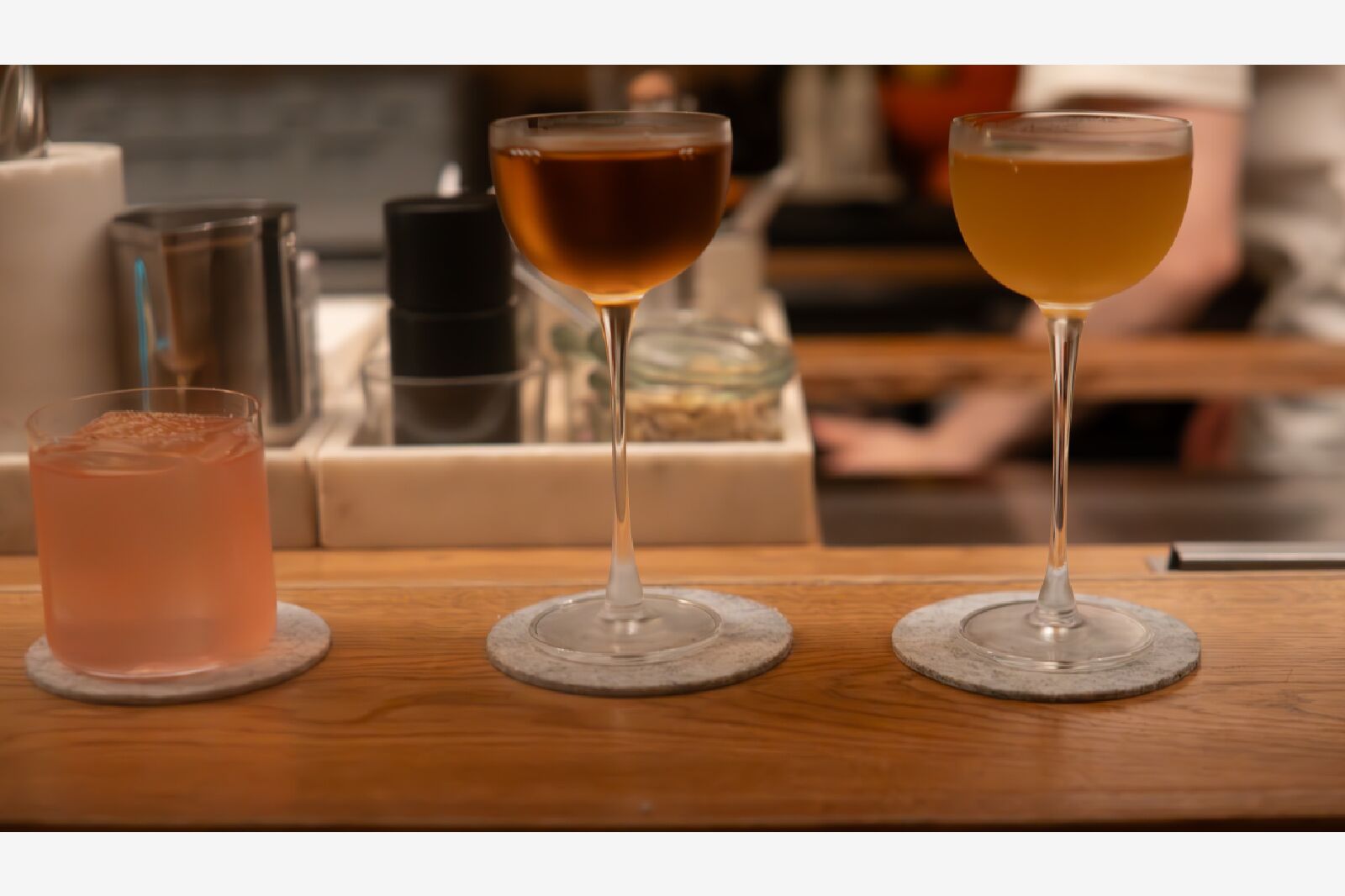
Photo: Johnny Motley
New Nordic bravura extends seamlessly into Copenhagen’s cocktail culture. Bird is a softly lit salon with vintage decor and walls lined with vinyl that pays homage to American jazz legend Charlie “Bird” Parker. Modeled after a Japanese listening bar, Bird pre-batches all its cocktails, allowing guests to savor the music and conversation without the clatter of ice machines or shakers.
Bird: Gl. Kongevej 102, 1850 Frederiksberg, Denmark
Lidkoeb
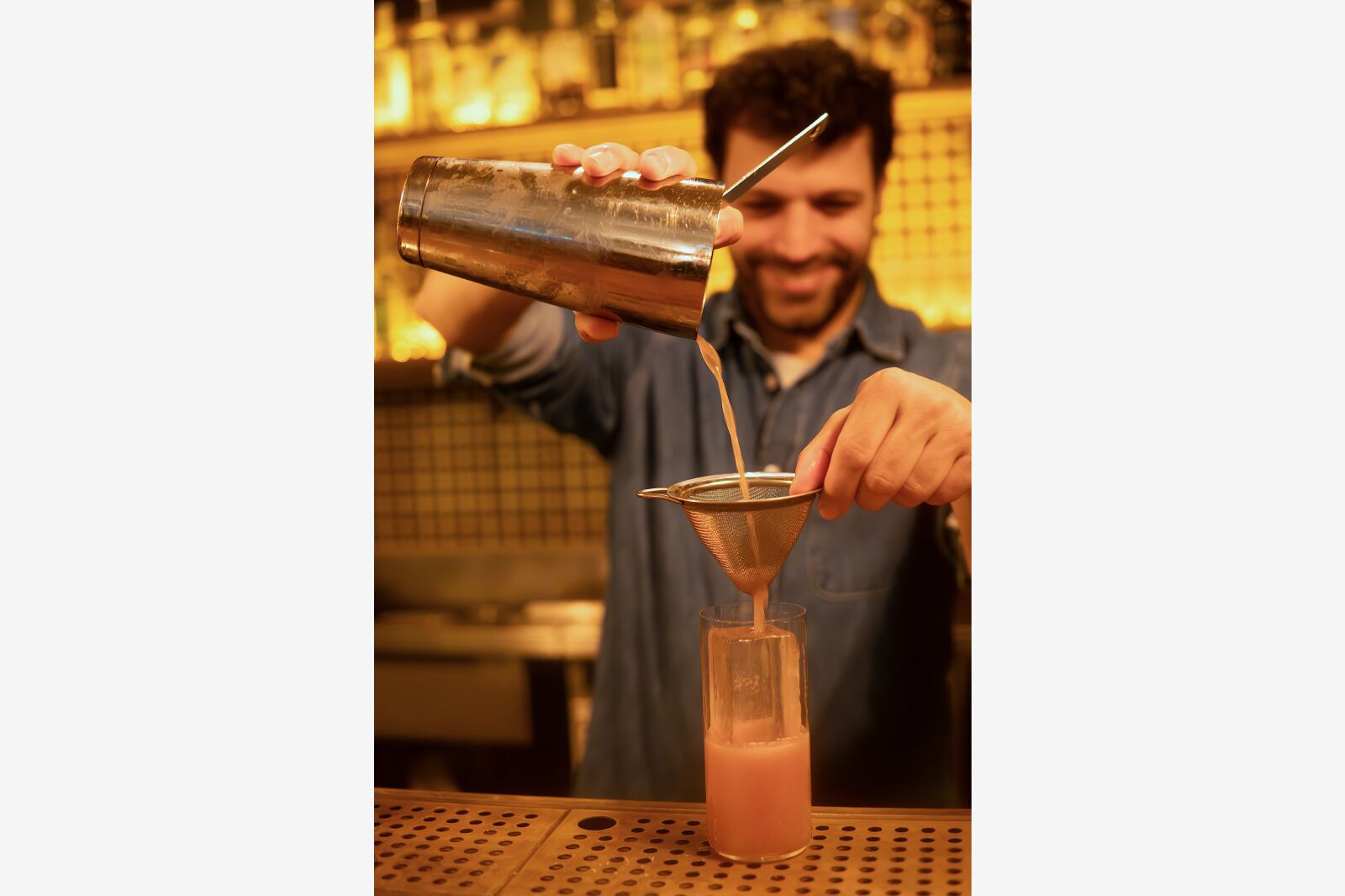
Photo: Johnny Motley
I never quite figured out how to pronounce Lidkoeb, but it’s a mixology tour-de-force. The atmosphere strikes a balance between a moody speakeasy and a lively neighborhood bar. It’s an industry-insider spot — on the night I visited, many of the patrons were bartenders themselves. The bar boasts an impressive lineup of Danish spirits, with boutique aquavits sharing shelf space with local whiskeys and gins. Tucked upstairs is a hidden whiskey library, stocked with rare finds from the hollers of Kentucky to the hills of Scotland.
Lidkoeb: Vesterbrogade 72B, 1620 København, Denmark
Activities in Copenhagen
National Museum of Denmark
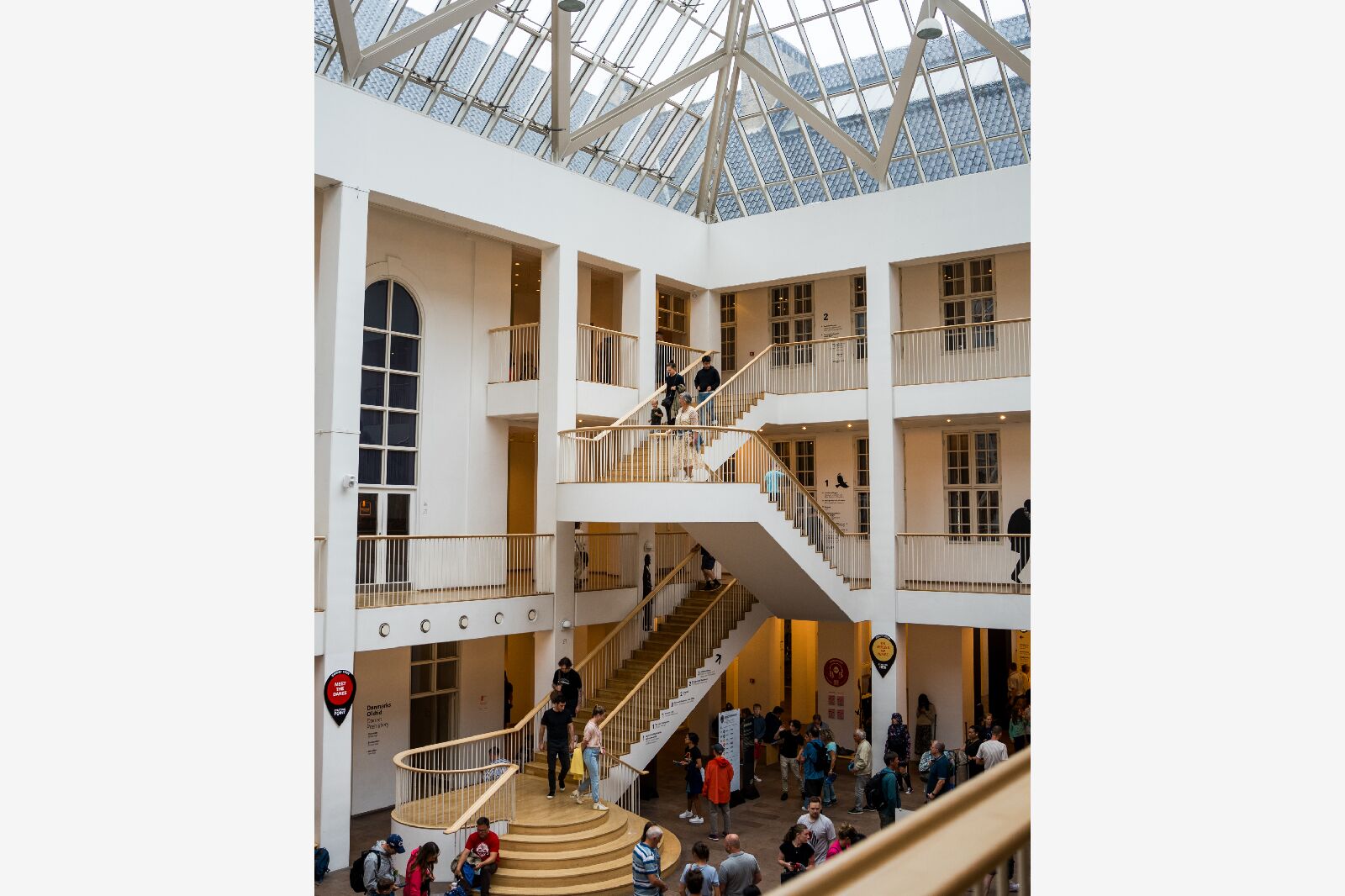
Photo: Mellanie Gandø
I relish wiling away an afternoon in a good museum, but I feel guilty spending hours indoors when the weather is nice. Fortunately, in the winter in Copenhagen, I don’t have these qualms. The National Museum of Denmark houses an authoritative collection of Viking rune stones, granite stele in which Norse warriors carved spells and epitaphs. The museum also houses fascinating exhibits on pre-historic Denmark’s fauna and geology, and the Indigenous nations of Greenland.
National Museum of Denmark: Ny Vestergade 10, 1471 København K, Denmark
Designmuseum Danmark
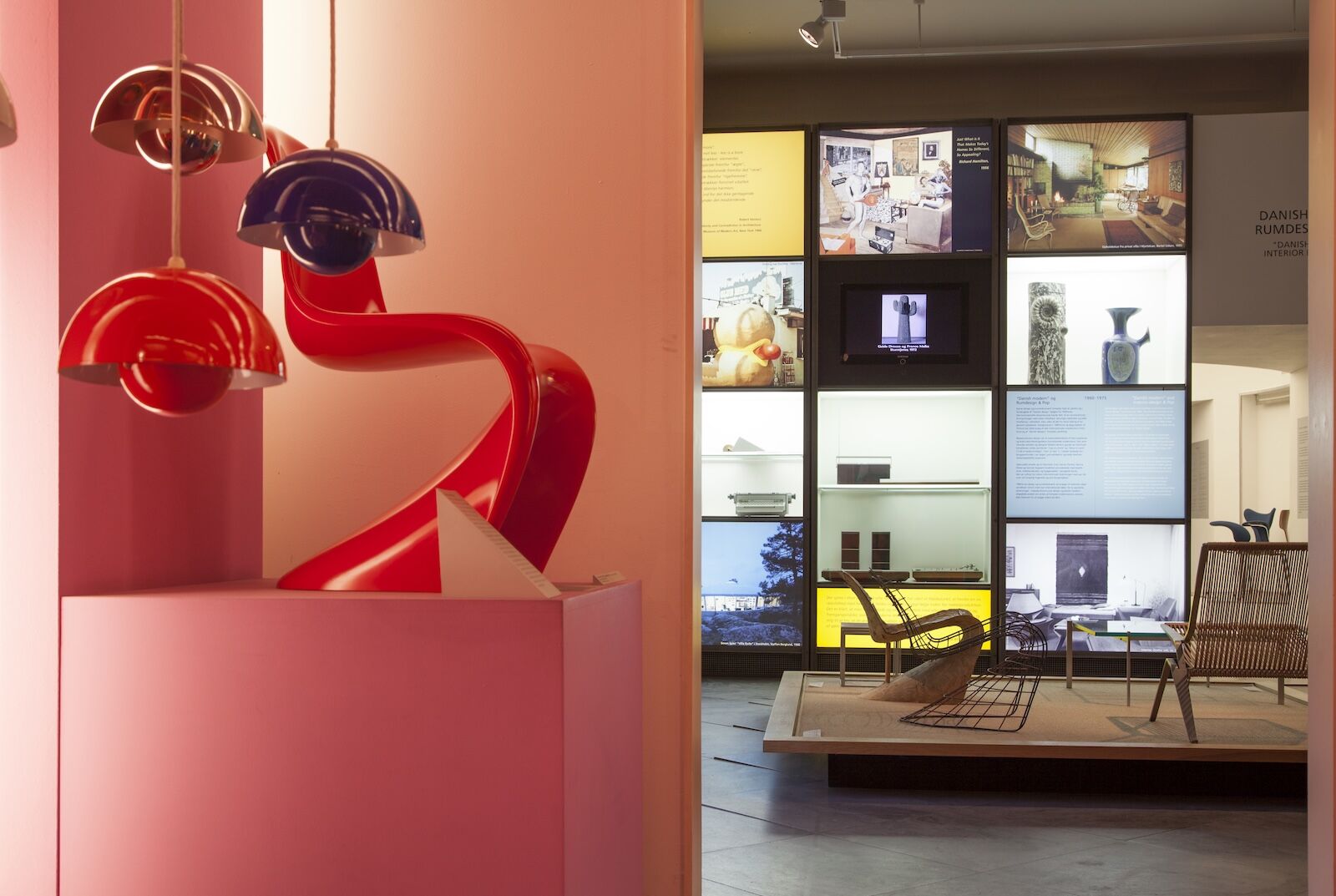
Photo: Designmuseum Danmark
The most delightful surprise of my trip to Copenhagen was Designmuseum Danmark, a museum devoted to design. I’ve long admired the clean, minimalist aesthetic of Scandinavian clothing brands like 66°North and Fjällräven, and this museum offered a chance to explore that tradition more deeply. Housed in an exuberant Rococo building that once served as Royal Frederik’s Hospital, the museum has been a cultural institution since 1895. Exhibits showcase ceramics, furniture, fashion, and textiles from Scandinavia as well as China and Japan.
Designmuseum Danmark: Bredgade 68, 1260 København, Denmark
CopenHot
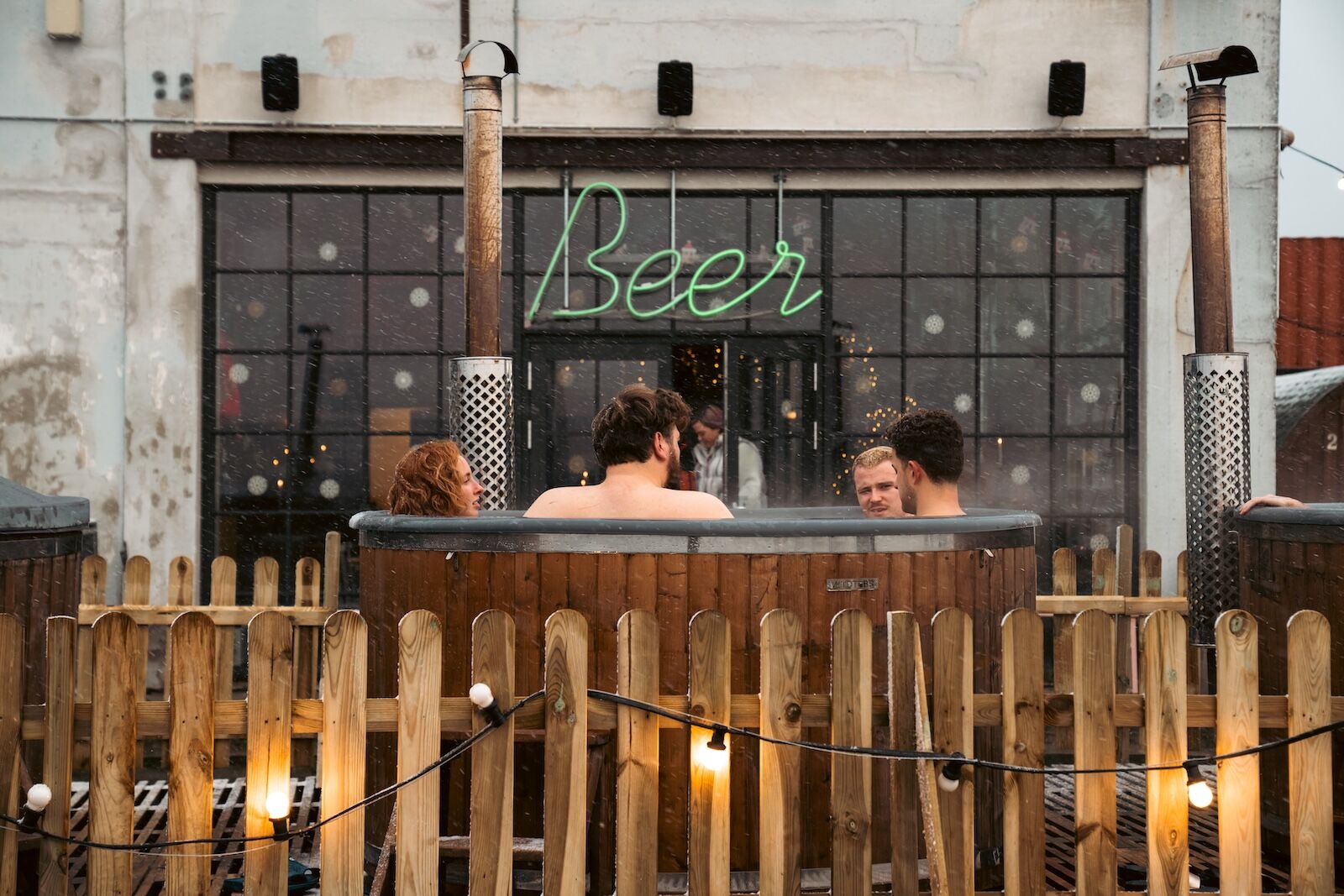
Photo: Daniel Rasmussen / Copenhot
Few things are as restorative as lounging in a sauna while snow falls gently outside the window. CopenHot, an outdoor spa on the edge of Copenhagen, offers multiple saunas, open-air jacuzzis, and cold plunges. As you schvitz and soak, you can order a kombucha, light beer, or a ginger shot — whatever your recovery ritual demands. After a few hours at CopenHot, you’ll feel right as rain, no matter how much aquavit you downed the night before. The vibe is relaxed and communal, with a healthy mix of locals and travelers sharing in the steam-soaked serenity.
CopenHot: Refshalevej 195, 1432 København, Denmark
Where to stay

Photo: Mellanie Gandø / Ottilla
We hope you love the stays we recommend! Just so you know, Matador may collect a small commission from the links on this page if you decide to book a stay.
Consider staying in the centrally located Carlsberg City District, which was once a self-contained company town built around the eponymous brewery that makes Denmark’s most well-known beer. A thick brick wall punctuated by gates as grand and ornate as those of a Viking chieftain’s hall still encircles the neighborhood. Despite its old-world feel, the district is well connected: a metro station just a 10-minute walk away offers easy, affordable access to the rest of Copenhagen.
Stay at Hotel Ottilia. The 19th-century building once served as the malt chamber for the Carlsberg Brewery. With weathered brick, massive concrete pillars, and exposed ceiling beams, its design is pure industrial-chic. The rooms are quiet and comfortable, and a laid-back, hostel-esque camaraderie permeates the lobby bar.































